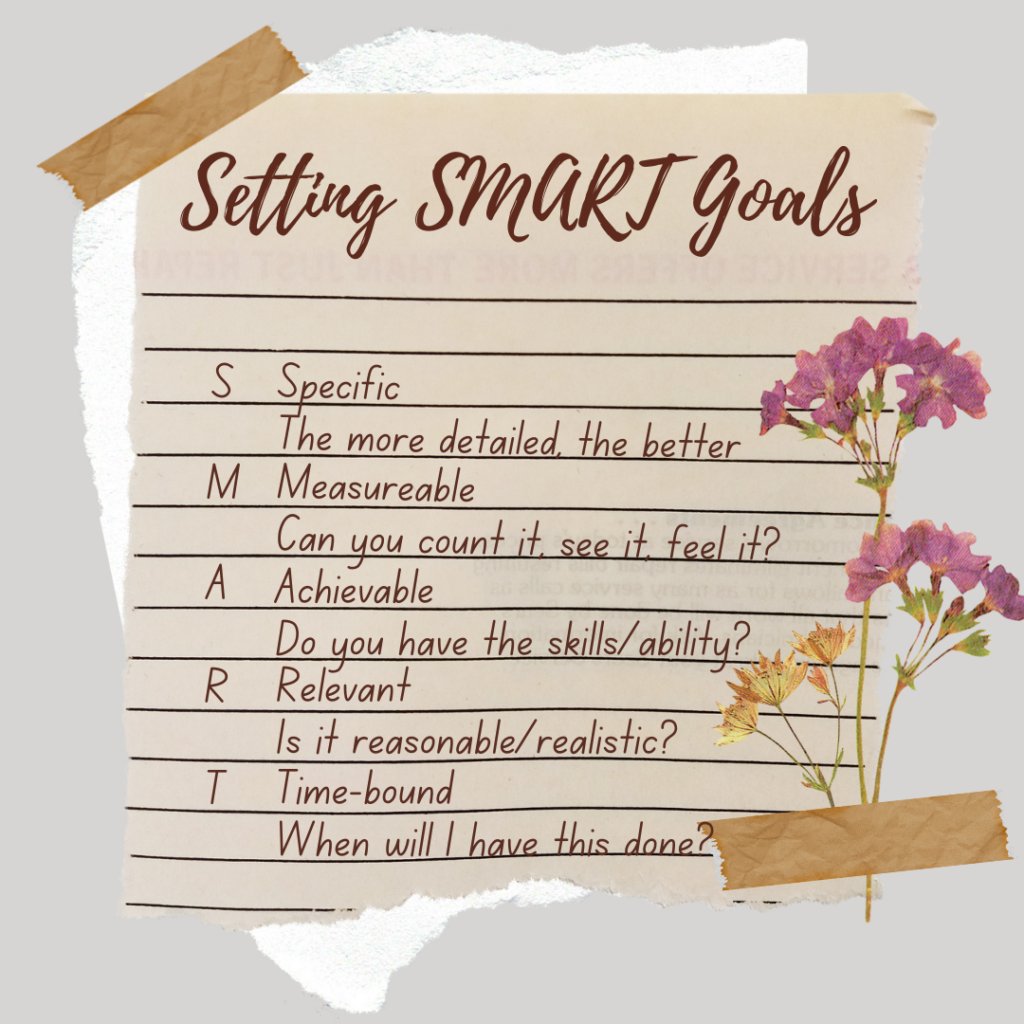
‘Tis the season to set new goals (aka New Year’s Resolutions)! But if we’re not careful about it, we’ll end up spiraling into the same old habit of giving up too soon. So how can we set some goals that we can actually meet? And how can we set those goals in relation to our dogs?
What do we mean by SMART goals? In order for goals to work, they need to be SMART. This means your goals needs to Specific, Measurable, Achievable, Relevant, and Time-bound. Here are a couple examples of SMART dog training goals:
- Working on leash reactivity: I will do driveway drills for 10 minutes, 3 times a week, for one month.
- Working on exposure: I will go to Farm N Fleet once per week this month and practice leash skills around the customers.
- Working on door manners: I will have my dog wait at the door every time we go outside for the next week.
Each of these goals has a purpose and a clear method of getting there. We’re not doing anything “just because,” but rather because we want to make a specific change in our dog’s behaviors (leash reactivity, door manners, etc.). You’ll also notice the time frame -we aren’t saying “forever” or “never”. We’re saying, “I’m going to try this new thing for this specific amount of time, because I believe it will change my relationship with my dog and my dog’s view of (fill in the blank)”. This is the ultimate purpose here. Your dog needs exposure and practice, but you also need to stay sane while you practice. So make your goals something that you can follow through with, and you’ll be sure to see results!
Want to learn more? There’s a whole bunch of information out there, but we recommend starting with Indeed’s article on SMART goals here. If you want to learn how to apply smart goals to your own dog’s training, you can sign up for your FREE consultation here!
